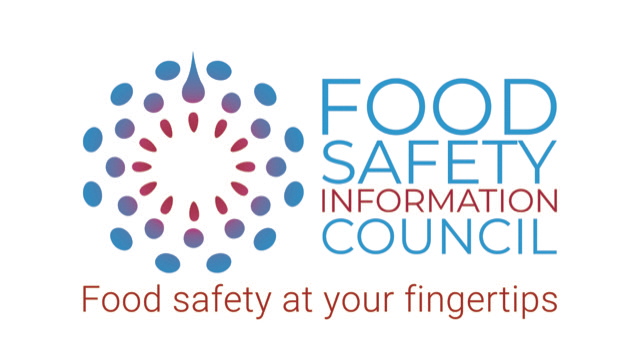Warning on raw egg dishes – Food safety experts issue advice for the holiday season
Media release: Saturday 15 December 2012
Whether you’ve been naughty or nice, you can still be a food poisoning victim during the Holiday Season especially if raw egg goodies are on the festive menu.
Warmer summer weather and large gatherings of multi-generational friends and relatives are nice, but can increase the chances of food poisoning. Especially if, inspired by the latest celebrity chef, we’re tempted to try out fancy recipes often containing riskier foods such as raw eggs.
Food Safety Information Council Chairman, Dr Michael Eyles, says that trying out new recipes this time of year can be great fun but food poisoning bugs can survive and even grow quickly in foods containing raw egg, like egg nog, home made mayonnaise and desserts such as tiramisu and chocolate mousse, if they aren’t handled properly.
‘Dishes containing uncooked or minimally cooked eggs can be a particular risk for food poisoning. OzFoodNet has shown that consumption of foods containing raw or minimally cooked eggs is currently the single largest cause of foodborne Salmonellaoutbreaks. In their most recent nine year survey period they have linked 68 food poisoning outbreaks to eggs with 1404 Australians becoming ill, 322 hospitalised and 2 deaths.
‘According to a national Newspoll survey, conducted for the Food Safety Information Council, nearly 20% of Australians are taking risks by not handling uncooked foods containing raw egg correctly. Almost 1 in 5 surveyed did not know that homemade whole egg mayonnaise should be refrigerated straight away: with 9% incorrectly saying refrigerate after a few hours, 2% incorrectly saying it could be left out of the refrigerator overnight and 7% not knowing what to do at all.
‘So if you are tempted to make raw eggs dishes this holiday period (like egg nog, uncooked desserts such as mousses and tiramisu, hollandaise sauces, fresh mayonnaise, aioli, health shakes with added raw egg or steak tartar) you can reduce the likelihood of illness by following the simple tips released by the Food Safety Information Council today,’ Dr Eyles concludes.
The Food Safety Information Council’s tips are:
- Dishes containing raw eggs as an ingredient, that aren’t going to be cooked before being eaten, should not be served to those vulnerable people at greater risk from food poisoning such as small children, pregnant women, the elderly and people with compromised immune systems.
- Egg meals should be cooked for these vulnerable people until the yolk in a boiled egg has started to become firm or eggs have become set in omelets or scrambled eggs.
- Check your eggs for visible cracks. If cracked it is safest to discard them or cook thoroughly, for example in a baked cake.
- If you accidentally drop pieces of shell into your egg mixture, it too could be contaminated and the mixture will need thorough cooking.
- Wash your hands with soap and running water and dry thoroughly before handling any food including eggs and after handling eggs or raw meat so you don’t contaminate other food.
- If you are not going to cook the eggs further, don’t separate the yolk from the white using the shell as that could contaminate the raw egg. Invest in a plastic egg separator.
- Prepare raw egg foods just before you are going to consume them and refrigerate immediately at 5°C or below, so the bacteria cannot grow.
- Keep your eggs refrigerated in the cardboard box you purchased them in.
If you have your own hens, gather eggs from their nesting places daily. Carefully check any eggs for cracks and wipe off any visible dirt with a dry cloth or paper towel but don’t wash the eggs. Then wash your hands with soap and water and dry thoroughly. If your children and grandchildren have been helping to collect eggs get them to wash their hands too.
Other food safety tips for Christmas include:
Ham. Christmas ham can keep several weeks with proper handling. After reading the instructions on the packaging, remove the ham from its plastic wrap, cover it with clean cloth or cotton bag soaked in water and vinegar, so it doesn’t dry out, and store it in the fridge below 5°C. Every few days rinse the cloth or bag in water and vinegar to refresh. Reduced salt hams are now becoming popular but may not last as long as conventional hams so follow instructions on the packaging. If purchasing an unpackaged ham direct from a butcher ask their advice on storage. Consider slicing any leftover ham, dividing into small containers and freezing for later use, for example on pizzas, in pastas etc.
Turkey. Check how many people will be eating turkey at your Christmas meal, you may only need to buy a turkey breast or a small bird which will be easier to defrost and not take up most of your fridge space. You can defrost a whole turkey in the fridge but this will take several days so it’s best to ask your butcher or supplier to defrost the turkey in their cool room. You must make sure it is thoroughly cooked all the way through to make sure any bacteria are killed – use a meat thermometer to check that the temperature in the thickest part reaches 75°C. Because stuffing slows down cooking and cooling, it is best cooked separately.
Seafood. Seafood is becoming more popular at Christmas time. Pick it up as close as possible to use. Bring it home in a cooler with ice and refrigerate promptly. If the seafood is going to be cooked this will kill any contamination caused by improper handling but there could be a risk if it is consumed raw (for example raw oysters, sushi, sashimi) or if precooked prawns are re-contaminated before serving. You will need to be particularly careful and hygienic in preparing these. Once again raw seafood isn’t recommended for vulnerable people like pregnant women, people with reduced immune systems, the elderly or young children.
The fridge. Before shopping for food for Christmas make sure there is enough room in the fridge to keep cold food at or less than 5oC. This is a good time to put the drinks on ice elsewhere and use the fridge to store perishable food. Make sure that raw meat and poultry can’t contaminate ready to eat food. Raw food can contain food poisoning bacteria. This is not a problem if the food is cooked before it is eaten. However, if these bacteria get onto ready to eat food, such as salads or desserts, they can cause food poisoning.
Leftovers. For some reason we always seem to end up with more food than we started with at Christmas Plan ahead for the number of people coming so you don’t end up with too many leftovers. Refrigerate any leftovers immediately after the meal, divide them into smaller portions or shallow containers if in large quantity, cover and place in fridge or freezer – they will cool quicker this way. Make sure there is good air circulation around the containers. Always store perishable leftovers in the fridge and use them up within two to three days. When reheating food ensure that it is steaming hot all the way through (at least 75oC).
Cross contamination. Regardless of the number of people you are catering for, you need to be careful when preparing food to prevent any cross contamination from bacteria. Wash your hands, chopping boards, knives and anything else which will come into contact with the food before you start preparing and between preparing raw and ready to eat foods. When possible, prepare ready to eat foods (like salads, fruit and dessert) first and refrigerate. Then prepare raw foods like meat that will be cooked.
Temperature danger zone. Between 5°C and 60°C is known as temperature danger zone. This is because in this zone bacteria can grow to unsafe levels in this temperature range, Don’t leave perishable foods in this zone for more than 2 hours. Divide nibbles, like dips and soft cheeses into small amounts and replenish with fresh portions as required. This also makes them look more appetising. Don’t mix fresh top-ups with ones that have been outside for some time.
The Food Safety Information Council is Australia’s leading disseminator of consumer targeted food safety information. It is a non-profit entity supported by the Australian Department of Health and Ageing, state and territory health and food safety agencies, local government, and leading professional, industry and community organisations.
Media contact: Lydia Buchtmann, Food Safety Information Council Communication Manager: 0407 626 688

